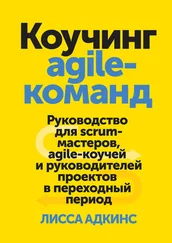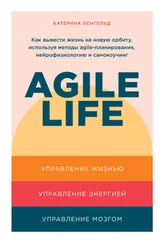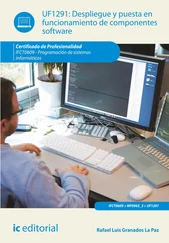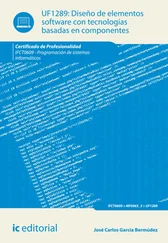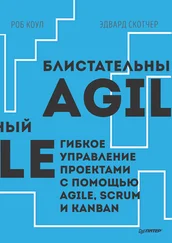You can immediately see how this relates to software development as a cooperative game of invention and communication. I probably owe a good deal of my construction of the cooperative game model to Ehn's writings. I had read the following article some years before working out the cooperative game idea, and had forgotten it in the meantime. As I started to write this book, I reviewed this article and was shocked to see how many of my words echoed Ehn's.
Ehn is concerned with the building of shared experience through shared practice, of using practice directly as a basis for discovering needs. This is a core element in working with tacit knowledge. More than that, he highlights the place of skill in carrying out practices (it is interesting to read Musashi's words pointing out much the same) While skill is a topic I have mentioned, Ehn develops it much more thoughtfully and completely.
I took the thinking in a different direction, concerned with playing a group game amicably, so that communication can take place at all. You will see that Ehn's ideas neatly complement the rest of the ideas in this book.
Pelle Ehn expresses it much better in his own words than I can through summaries. His book, Work-Oriented Devlopment of Software Artifacts is sadly out of print. However, this excerpt from his 19?? article, "Scandinavian Design: On Participation and Skill" (Ehn 1992) contains the line of development I feel are so important.
In this extract from that article, all phrases in italics are mine, to emphasize points to which I want to draw your attention, as relevant to the notion of cooperative games.
"On Participation and Skill"
...
In the following, I will propose that this new understanding can be buttressed by an awareness of language games and the ordinary language philosophy of Ludwig Wittgenstein. My focus is on the shift in design from language as description towards language as action.
Rethinking Systems Descriptions
A few years ago I was struck by something I had not noticed before. While thinking about how perspectives make us select certain aspects of reality as important in a description, I realized I had completely overlooked my own presumption that descriptions in one way or another are mirror images of a given reality. My earlier reasoning had been that because there are different interests in the world, we should always question the objectivity of design choices that claimed to flow from design as a process of rational decision making. Hence, I had argued that we needed to create descriptions from different perspectives in order to form a truer picture. I did not, however, question the Cartesian epis ontology of an inner world of experiences (mind) and an outer world of objects (external reality). Nor did I question the assumption that language was our way of mirroring this outer world of real objects. By focusing on which objects and which relations should be represented in a systems description, I took for granted the Cartesian mind-body dualism that Wittgenstein had so convincingly rejected in Philosophical Investigations (1953). Hence, although my purpose was the opposite, my perspective blinded me to the subjectivity of craft, artistry, passion, love, and care in the system descriptions.
Our experiences with the UTOPIA project caused me to re-examine my philosophical assumptions. Working with the end users of the design, the graphics workers, some design methods failed while others succeeded. Requirement specifications and systems descriptions based on information from interviews were not very successful. Improvements came when we made joint visits to interesting plants, trade shows, and vendors and had discussions with other users; when we dedicated considerably more time to learning from each other, designers from graphics workers and graphics workers from designers; when we started to use design-by-doing methods and descriptions such as mockups and work organization games; and when we started to understand and use traditional tools as a design ideal for computer-based systems.
The turnaround can be understood in the light of two Wittgensteinian lessons. The first is not to underestimate the importance of skill in design. As Peter Winch (1958) has put it, "A cook is not a man who first has a vision of a pie and then tries to make it. He is a man skilled in cookery, and both his projects and his achievements spring from that skill." The second is not to mistake the role of description methods in design: Wittgenstein argues convincingly that what a picture describes is determined by its use.
In the following I will illustrate how our "new" UTOPIAN design methods may be understood from a Wittgensteinian position, that is, why design-by-doing and a skill-based participatory design process works. More generally, I will argue that design tools such as models, prototypes, mockups, descriptions, and representations act as reminders and paradigm cases for our contemplation of future computer-based systems and their use. Such design tools are effective because they recall earlier experiences to mind. It is in this sense that we should understand them as representations. I will begin with a few words on practice, the alternative to the "picture theory of reality".
Practice is Reality
Practice as the social construction of reality is a strong candidate for replacing the picture theory of reality. In short, practice is our everyday practical activity. It is the human form of life. It precedes subject-object relations. Through practice, we produce the world, both the world of objects and our knowledge about this world. Practice is both action and reflection. But practice is also a social activity; it is produced in cooperation with others. To share practice is also to share an understanding of the world with others. However, this production of the world and our understanding of it takes place in an already existing world. The world is also the product of former practice. Hence, as part of practice, knowledge has to be understood socially--as producing or reproducing social processes and structures as well as being the product of them (Kosik, 1967; Berger & Luckmann, 1966).
Against this background, we can understand the design of computer applications as a concerned social- and historical-conditioned activity in which tools and their use are envisioned. This is an activity and form of knowledge that is both planned and creative.
Once struck by the "naive" Cartesian presumptions of a picture theory, what can be gained in design by shifting focus from the correctness of descriptions to intervention into practice? What does it imply to take the position that what a picture describes is determined by its use? Most importantly, it sensitizes us to the crucial role of skill and participation in design, and to the opportunity in practical design to transcend some of the limits of formalization through the use of more action-oriented design artifacts.
Language as Action
Think of the classical example of a carpenter and his or her hammering activity. In the professional language of carpenters, there are not only hammers and nails. If the carpenter were making a chair, other tools used would include a draw-knife, a brace, a trying plane, a hollow plane, a round plane, a bow-saw, a marking gauge, and chisels (Seymour, 1984). The materials that he works with are elm planks for the seats, ash for the arms, and oak for the legs. He is involved in saddling, making spindles, and steaming.
Are we as designers of new tools for chairmaking helped by this labeling of tools, materials, and activities? In a Wittgensteinian approach the answer would be: only if we understand the practice in which these names make sense. To label our experiences is to act deliberately. To label deliberately, we have to be trained to do so. Hence, the activity of labeling has to be learned. Language is not private but social. The labels we create are part of a practice that constitutes social meaning. We cannot learn without learning something specific. To understand and to be able to use is one and the same (Wittgenstein, 1953). Understanding the professional language of chairmaking, and any other language-game (to use Wittgenstein's term), is to be able to master practical rules we did not create ourselves. The rules are techniques and conventions for chairmaking that are an inseparable part of a given practice.
Читать дальше

